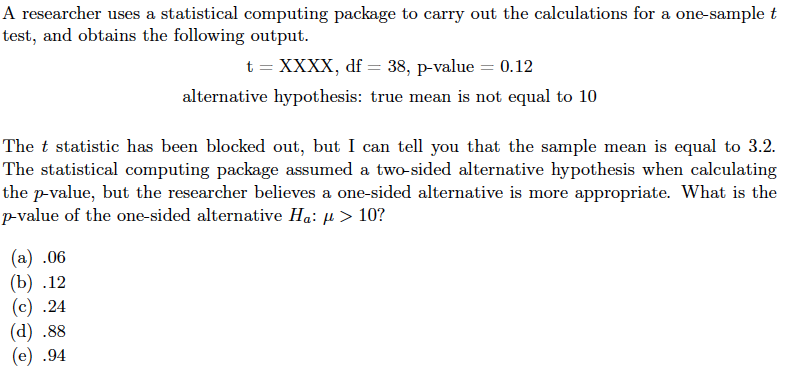Question
1.Which one of the following statements is false? (a) A statistic is a numerical characteristic of a sample, and a parameter is a numerical characteristic
1.Which one of the following statements is false?
(a) A statistic is a numerical characteristic of a sample, and a parameter is a numerical characteristic of a population.
(b) The value of a statistic would vary in repeated sampling.
(c) In most practical situations, the sampling distribution of a parameter will be approximately
normal for large sample sizes.
(d) ^p is a statistic, and the standard deviation of its sampling distribution depends on the parameter p.
(e) None of the above.
2.Suppose we carry out a hypothesis test and find a p-value of .06. The evidence against H0 is:
(a) Significant at the 1% significance level.
(b) Not significant at the 1% level, but significant at the 5% level.
(c) Not significant at the 5% level, but significant at the 10% level.
(d) Not significant at the 10% level.
3.

Step by Step Solution
There are 3 Steps involved in it
Step: 1

Get Instant Access to Expert-Tailored Solutions
See step-by-step solutions with expert insights and AI powered tools for academic success
Step: 2

Step: 3

Ace Your Homework with AI
Get the answers you need in no time with our AI-driven, step-by-step assistance
Get Started


